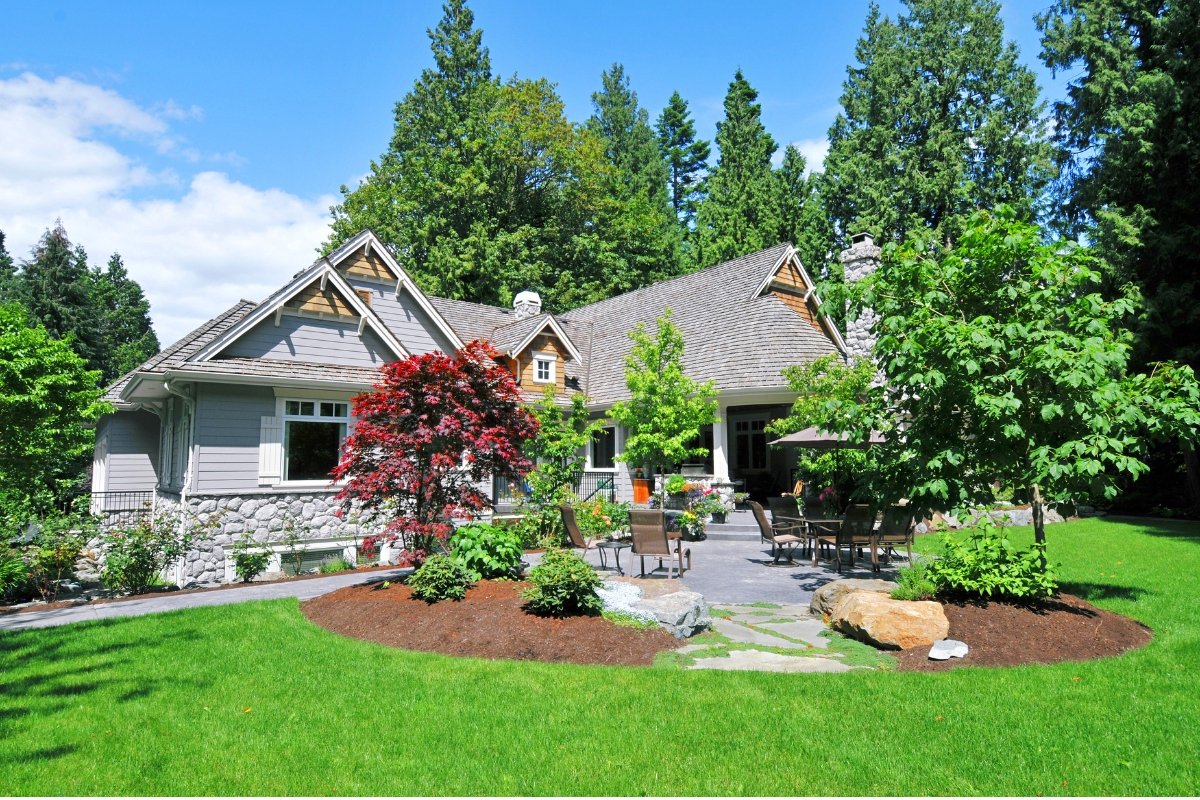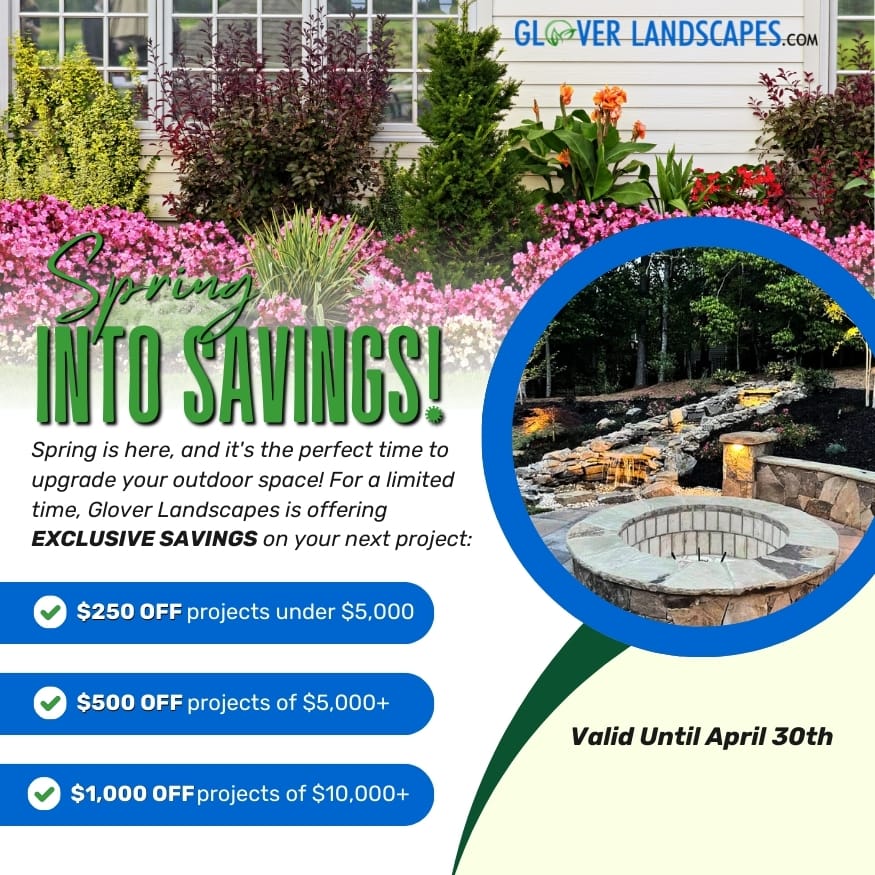The way your home looks says a lot about you. Our homes can give guests, passersby and even us a sense of comfort and safety, or hint at a personality that screams “This is who I am, and this is what I stand for!” When it comes to showing off who you are, there is no better place to start than the homefront. With landscaping designs for front yards, you can make your home stand out from the rest in more ways than one.
In this blog post, we will look at some of the best tips on how to spruce up your outdoor space with creative and eco-friendly landscaping designs for front yards. From different types of greenery to hardscapes and other features, we have a few ideas that will help you create an eye-catching and inviting homefront in no time.
Developing a Plan for Front Yard Design
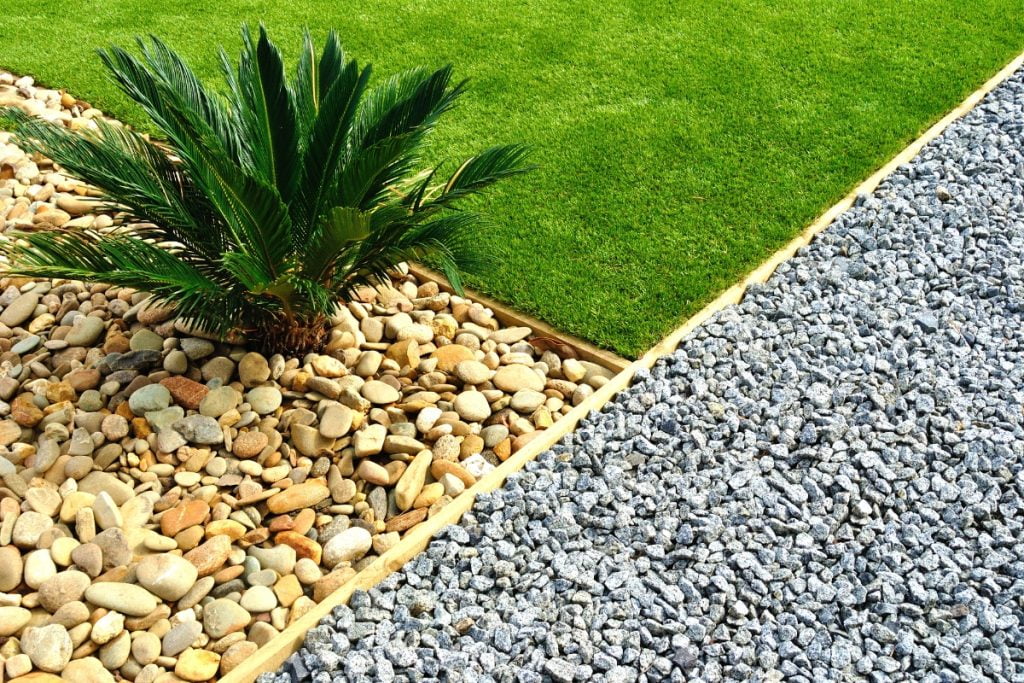
Creating a beautiful and inviting front yard is much more than simply planting some colorful plants. Crafting a stunning front yard landscape requires careful planning, creativity, and attention to detail. Starting your outdoor landscaping project requires developing a plan so that you know what materials, designs, and plants you’ll need to get the job done.
The first step in the planning process is to assess your existing front yard. Walk around your yard and take note of its current condition. Consider how much work will be necessary to make it look the way you want – such as mowing, pruning, mulching, etc. Some areas may require more work than others, so be sure to be thorough in your assessment.
Once you have an idea of what needs to be done, it’s time to start sketching ideas. There is no single “right” way to design your front yard; the sky is the limit when it comes to creativity! Jotting down your ideas allows you to further explore various options and decide which elements to include in your landscape plan.
When designing a front yard landscape, it’s important to consider the size of the area and how much space you have to work with. You may have a large front yard that can accommodate a variety of features, or we may have a small one that limits your options. It’s important to understand the constraints that come with the size of your yard. This will help you create a more realistic landscape plan tailored to your desired outcome.
It’s also important to choose an appropriate color palette for your front yard. Colorful flowering plants and shrubs can bring vibrancy to your outdoor space, while warm-toned hardscapes like stone and gravel can bring sophistication. Be sure to select plants and hardscapes that will thrive in your climate and soil conditions.
Utilizing Different Elements to Create Visual Interest
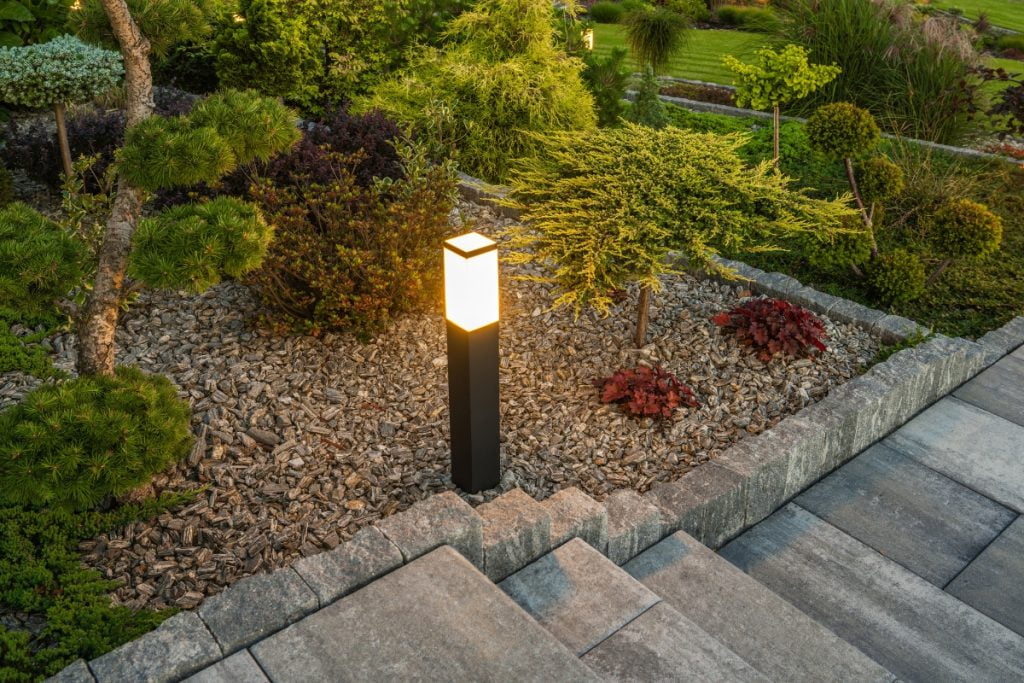
Creating visual interest in your front yard can be key to making it inviting and welcoming. Visitors will be drawn to the balanced combination of different landscaping elements–trees, shrubs, rocks, and flowers–that can create an inviting space. By utilizing different elements, you can achieve a full, vibrant look that is sure to wow any guest.
Using trees is one of the most common ways to create a beautiful space. Trees come in many shapes and sizes, so they can be used to frame a specific area or provide height and shade. The type of tree you choose should depend on the amount of sunlight your front yard gets and the amount of space you have. evergreen trees, for example, can provide green foliage throughout the year.
Shrubs are a great way to provide texture and add more color and variety to your landscape. They also come in various shapes and sizes, so you can use them to create a more defined look if you choose. For example, you can use boxwoods to create low hedges to separate different areas.
Rocks can also be used to create interesting designs. They can be used to create pathways or as a decorative element. Rocks come in many shapes and sizes, like river rocks, gravel, or larger boulders, so there are plenty of options to create a design that suits your home’s style.
Flowers are a classic way to add beauty and color to a space. You can use perennial flowers to create a layered look that will bloom throughout the season, or you can opt for annuals that will come back every year. Another option would be to use wildflowers, which can attract bees and butterflies to your landscape.
Combining Colorful Plants and Structures
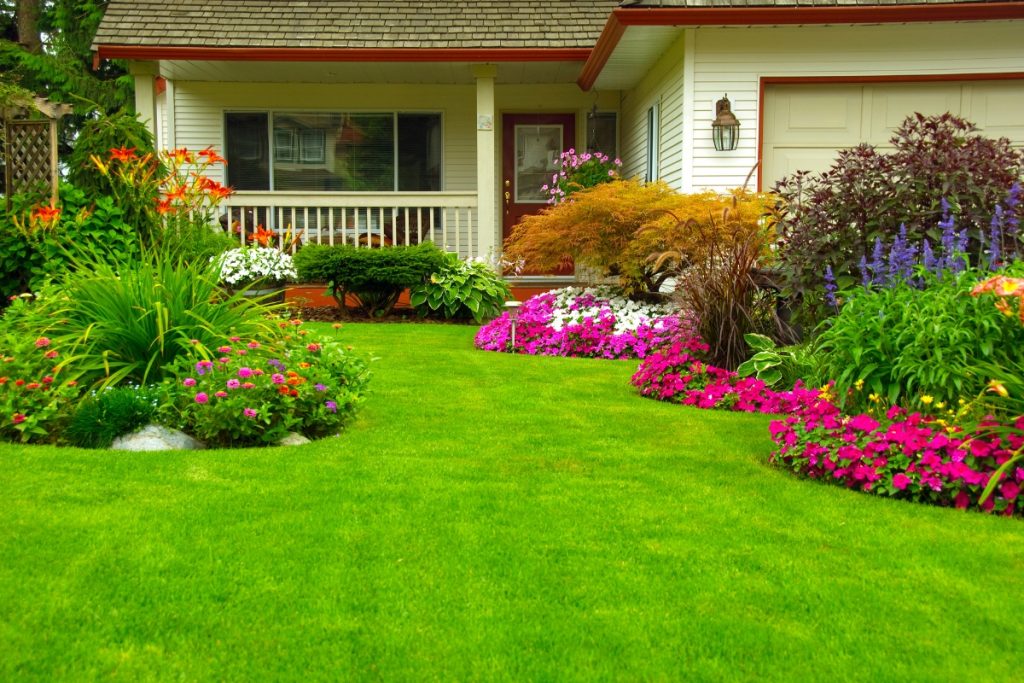
Bringing life to your home’s front yard requires the perfect combination of colorful plants and structures. From flowerbeds to fountains and from garden sculptures to trellises, all these elements combine to create an inviting environment that brings joy and beauty to your home.
When it comes to flowers and foliage, you’re spoiled for choice. Planters and beds can be filled with just one type of plant, or perhaps a mixture of complimentary colors. If you want to add height to the area then a tree or large shrub is an excellent choice – choose a blossom-bearing variety during the summer months to really bring the yard to life.
When it comes to structures, a gazebo or pergola can provide a sense of grandeur and style to any yard. They provide great spots for seating, relaxing, or hosting get-togethers away from the main house. Alternatively, small sculptures and statues can add charm and character, especially if you choose something with a connection to your family and home.
Whatever you decide to do with your front yard, combining the right plants and features is key to creating a welcoming and attractive outdoor environment. With a little bit of creativity and planning, you can turn your front yard into a charming paradise that everyone will enjoy.
Integrating Natural Elements
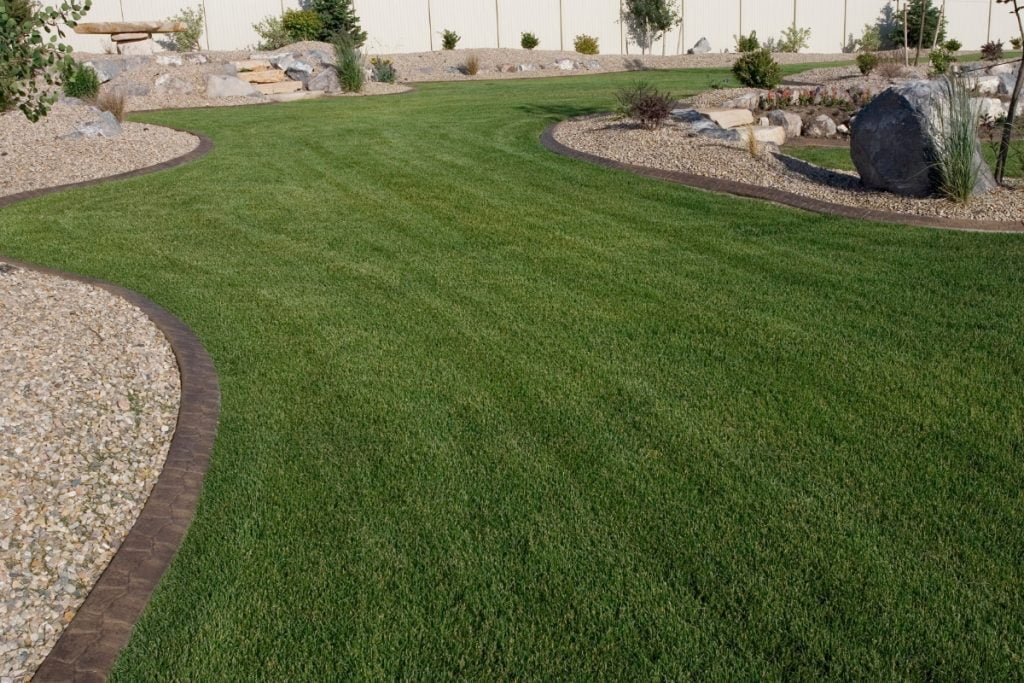
With homeowners looking for an efficient way to enhance their front yards, integrating natural elements into their landscaping designs is a great approach. Natural elements such as rocks and stones, plants, bushes and trees, and even water features can add a unique appearance to any front yard.
When creating landscape designs with natural elements, it’s important to consider the size of the area you are working within. Generally, larger areas can accommodate more complex designs while smaller yards often require simpler designs. Careful consideration must also be given to plant placement. Trees should be placed to allow them ample room to grow while other elements should be arranged to allow for easy maintenance.
Water features can range from small waterfalls and streams to large ponds. These are sure to add significant curb appeal to any home. In addition, their sound will be both soothing and tranquil for guests. Consult a knowledgeable landscaper to ensure that your water feature functions properly.
Stones and rocks can create interesting designs and contrast nicely with the color and texture of plants. When choosing stones, consider the color and size that will best fit the area and surrounding plants. Installation of these components requires some skill, but with proper education and guidance, homeowners can tackle many of these projects themselves.
Adding natural elements to landscape designs can be a simple and efficient way to create an inviting and beautiful front yard. In addition, it can be both fun and rewarding. Consulting with a professional landscaper can help to ensure that the designs are properly integrated and maintained over time.
Enhancing with Water Features
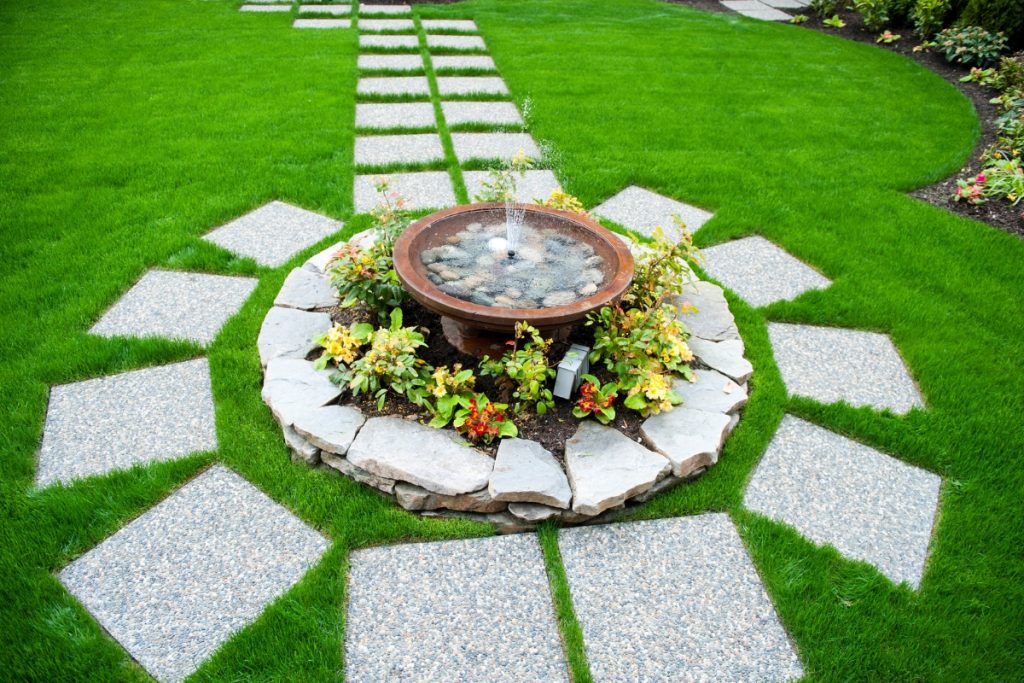
Water features such as ponds, fountains, and waterfalls create a soothing ambiance. They can also attract birds and other wildlife to your landscape, adding even more visual interest to the area. With various sizes and shapes of water features available, the possibilities are limitless when it comes to making your front yard stand out.
An easy way to start off is to consider a garden pond. Whether it’s a small pre-formed pond or a full-sized in-ground pond, a water feature like this creates a tranquil and peaceful backdrop. From within a reflective pool of water, you can add aquatic plants, stones, and even koi fish. This arrangement offers engaging visuals and natural motion while simultaneously bringing more wildlife to the front yard.
Smaller water features like tabletop fountains are also popular choices for front yards. They don’t take up very much space and can be quite affordable, making them ideal for limited spaces.
These fountains work best indoors but can also be used outdoors when the temperature permits. Sometimes no more than a few stones and a pump are needed to create a decorative and tranquil centerpiece.
For a much larger water feature, you may want to consider a waterfall. Waterfalls offer a captivating effect, both visually and audibly, and instantly bring life to any dull front yard. Waterfalls come in many sizes and styles; you can go for a large cascading waterfall or a series of tiered falls. For a natural and aesthetically pleasing look, use rocks, pebbles, and plants to blend in with your landscape design.
Incorporating Lighting
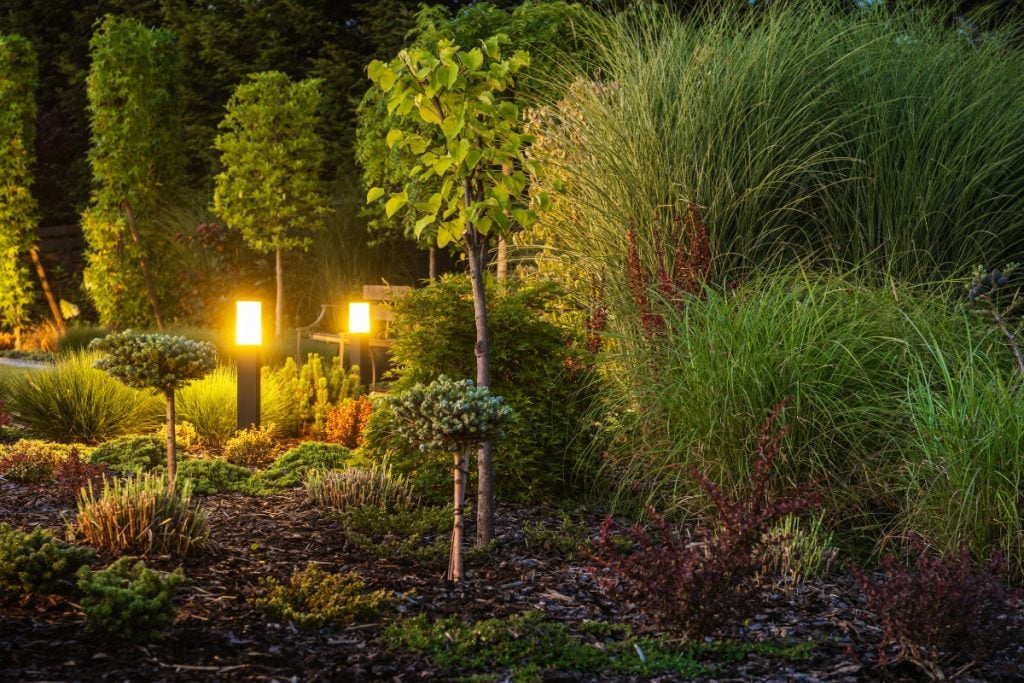
Lighting is an important aspect of creating an inviting homefront. Not only can it provide more visibility and help create a beautiful and cozy nighttime atmosphere, but it also helps to add a layer of safety for you and your family. When incorporating lighting into your front yard landscaping designs, it’s important to consider several factors.
Begin by deciding on the type of lighting you’d like to use. LED and solar-powered lighting are popular options as they are energy efficient and cost-effective. You can also go for low-voltage lighting that can be wired directly into your home or garden power outlet. The number of lights you’ll need will depend on the size of your yard and the amount of lighting you’re looking for.
Then comes the issue of placement. For safety and convenience, you’ll want to incorporate path lighting along any walkways to make them visible at night, as well as security lighting near the entrance and perimeter of your yard. Spotlights or uplights can be used to highlight features, while wall sconces can provide a charming touch.
You’ll need to think about how often you will use the lighting. If you think you’ll be using your outdoor space only occasionally, then you should consider a timer system that will turn the lights on and off when you want them to. This can help save energy and money.
Finally, make sure you select lights that are compatible with the way you’re powering them. Solar-powered lights require direct sunlight, so make sure you place them in a sunny spot. Low-voltage lighting needs to be connected to the right type of transformer for safety and efficiency.
Plan for a Stunning Front Yard Landscape
Creating an inviting homefront with beautiful landscaping designs can be a fun and rewarding task. Now that you’ve explored different landscaping options, you’re better equipped to make the right decision for your front yard. Consider the size and shape of your landscape, your desired outcome, and your budget when making a choice.
There are many options available so take your time to explore what best meets your needs and preferences. Remember, your front yard should be an extension of who you are so let that be reflected in your design. With some thoughtful planning and hard work, you can create an inviting and stylish landscape that adds curb appeal to your home.
For the best landscaping designs for front yards, leave it to a professional like Glover Landscapes to take care of it. Our team of expert professionals will work closely with you to make sure that your home has the best landscaping design to suit its look and your vision.
With our range of landscape design and water features services, we have the services to bring your landscaping design ideas to life. Get a free estimate on our website, or give us a call at (404) 510-6437 and let’s talk about taking your home’s landscaping to the next level today!
